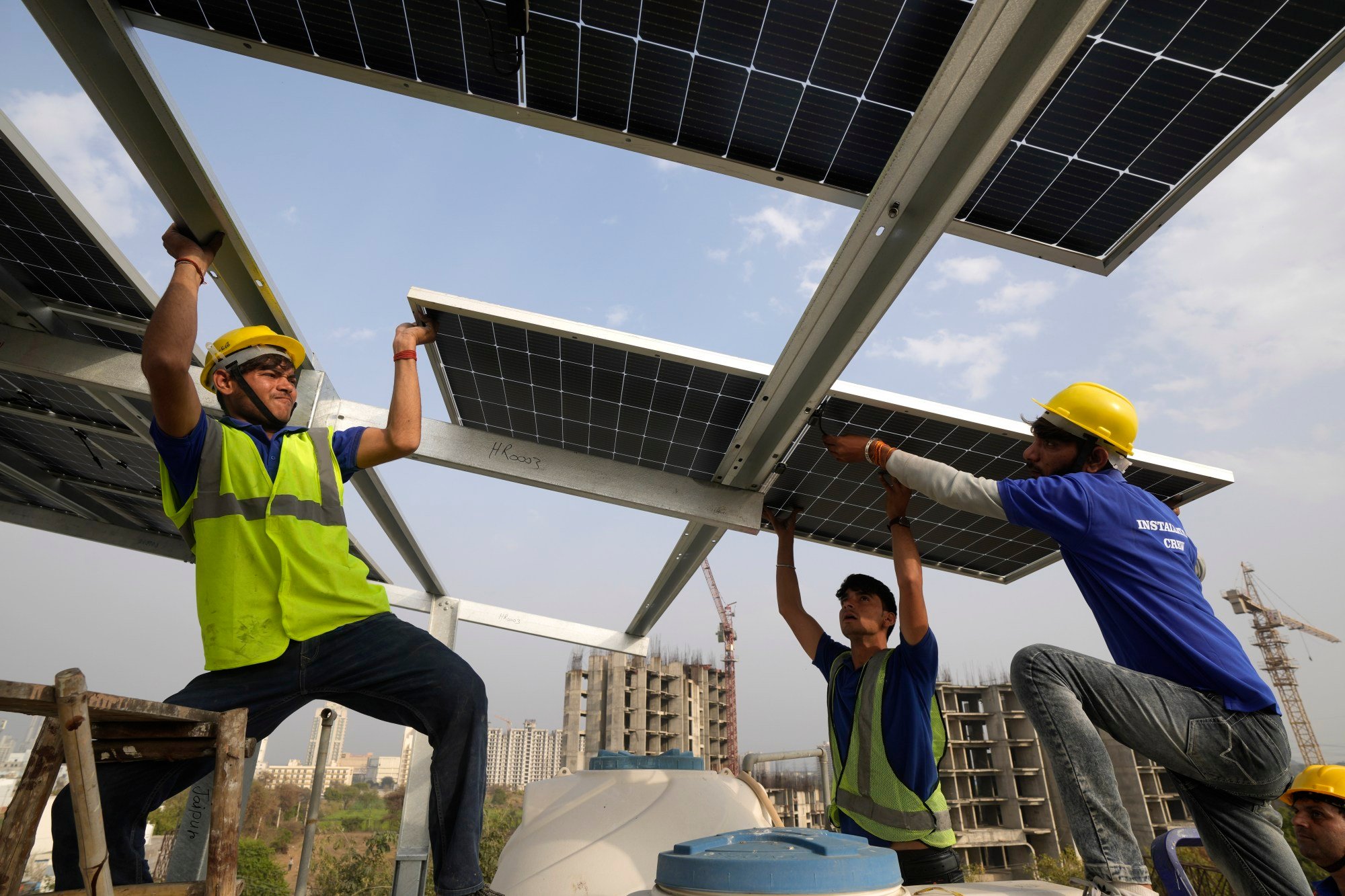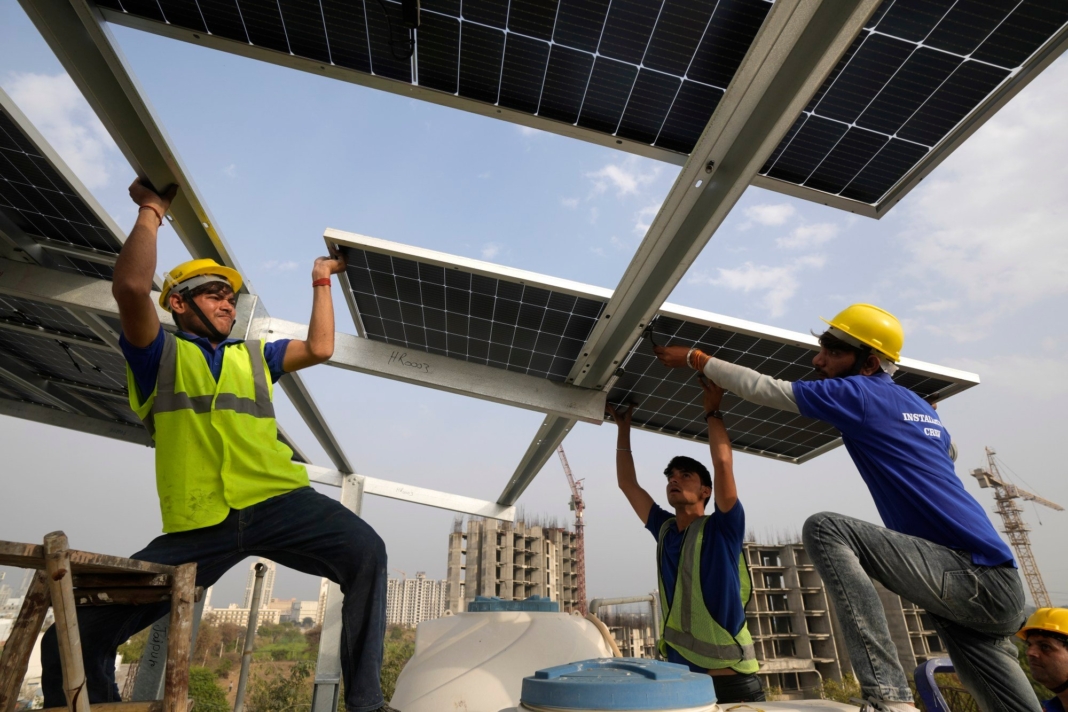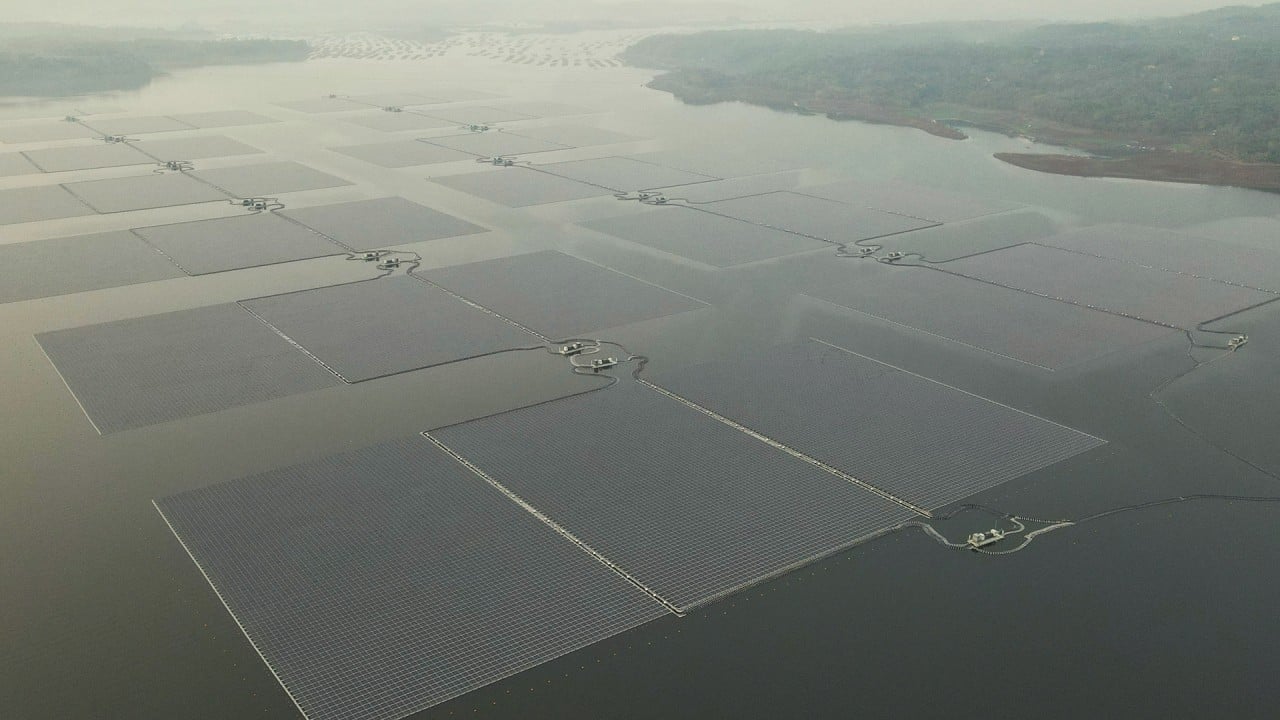DER refers to any small-scale unit of power generation or energy storage technologies, operating either as part of a local distribution network or off-grid. These can range from individual solar panel installations on home rooftops to electric vehicles and battery storage units that feed power back into the grid. DER systems allow for the management of energy at or near the point of use, which energy analysts say increases flexibility and efficiency.
Kuiper said that DER systems could help Southeast Asia unlock billions of dollars worth of renewable energy potential and accelerate the region towards its goal of becoming a clean energy hub.
Asean renewable energy sector gets boost from China’s solar projects
Asean renewable energy sector gets boost from China’s solar projects
“An EV is just a battery on wheels. You can have a power point in your car or your truck, and you can plug in whatever, whether it’s a power tool [or something else],” Kuiper said, adding that it is possible to upload or download energy with DER just like data from the internet.
“The really important part of the energy transition is EVs are likely to be the majority of our distributed battery storage going into the future … A lot of car companies in China and South Korea are working on cars that will feed [energy] back into homes or the grid,” she added.
Another benefit of DER systems is that they are more resilient to climate change events, Kuiper noted. She highlighted the example of residents using their homes and EV batteries to help their neighbours during recent bushfires in Australia and prevent refrigerated food from spoiling when the affected households did not have access to traditional power sources.
However, Kuiper acknowledged that there are technical roadblocks to prevent DER systems from realising their full potential.
“The main thing is our electricity system has been designed for very, very large generators of mainly oil and gas. It does not have the technical standards, the regulations or market access for all these smaller devices,” she said.
Investors pump billions into India’s green economy amid ‘favourable climate’
Investors pump billions into India’s green economy amid ‘favourable climate’
Tim Buckley, the Sydney-based director of the Climate Energy Finance think tank, said the adoption of DER systems, particularly rooftop solar panels, should be scaled up significantly in Asia to reach their potential.
“DER is a massively underutilised resource, particularly for land-constrained nations who have good solar resources like India and others in Asia,” Buckley said.
Citing an example in Denmark, Buckley said construction is under way to build the world’s largest solar rooftop power plant. When completed, the plant on top of a logistics centre in the city of Horsens will have 35 megawatts of capacity, equal to a typical solar farm.
While Asia may not be home to such ambitious DER projects yet, scaling them up could happen relatively rapidly compared with large-scale power plants, Buckley said.
“Residential solar projects in Australia can be established in only a day, while commercial and industrial projects can take a couple of months and just a fraction of the time to install thermal power plants, which is five to six years,” he said.

DER systems also reduce the need for massive investments in grid transmission since they leverage existing grids, effectively freeing up to 10 years of construction time, he added.
Regulatory reforms are really needed to drive the adoption of DER, but regulators often have to take into consideration the interests of power utilities or grid operators, Buckley said.
Supportive policies needed
A mindset change among those running or regulating electricity systems is required for DER systems to reach their potential, Kuiper said. Policymakers should treat them as equally important to the clean energy transition as large-scale energy generation and transmission, she argued.
During the unveiling of Singapore’s 2024 budget last month, the city state announced a S$5 billion Future Energy Fund aimed at reaching its goal of net-zero emissions. The main investments discussed for the plan were major projects such as the construction of undersea cables to import low-carbon electricity from other countries and hydrogen power generation.
“While Singapore has been focusing on centralised renewable energy sources, it’s not entirely neglecting decentralised systems,” said Sanjana Ramesh, Power System Engineer at VFlowTech, an energy storage solutions provider.
“However, as distributed systems mature, they should be considered for their resilience, flexibility and most importantly, their sustainability,” she said.
According to the International Energy Agency, the deployment of solar panels, wind power, nuclear power, electric cars, and heat pumps from 2019 to 2023 helped reduce global emissions by 2.2 billion tonnes annually. Nonetheless, the reduction was four times lower than the annual target set out in the Cop28 pledge.
“What’s missing is how to push for this strategy and utilise these DER as a means to facilitate massive integration of variable renewable energy. The government and utilities need to kick-start the framework of regulations and institutional structure to maximise the benefit of DER in Indonesia,” said Arinaldo.
Can Red Sea attacks speed up Southeast Asia’s clean energy transition?
Can Red Sea attacks speed up Southeast Asia’s clean energy transition?
Tristan Pheh, a junior analyst at Rystad Energy, also called for supportive policies to maximise the benefits of rooftop solar panels and battery energy storage systems (BESS).
“This is a region of price-sensitive consumers, so they will welcome any policies that make the costs lower [such as through grants, tax credits, low-interest loans] or allow excess electricity to be sold” back to power grids, Pheh said.
“Streamlining the process for homeowners to adopt rooftop solar can unlock more of its potential. BESS serves as a tool for demand control, especially in situations where solar absorption is insufficient. Governments must provide clear guidance on how batteries can be utilised,” he added.
Harjeet Singh, the global engagement director for the Fossil Fuel Non-Proliferation Treaty Initiative, said expanding DER across Southeast Asia is feasible due to the region’s immense promise of generating energy from sunlight and other renewable sources.
Apart from challenges on the regulatory front, the region also faces a lack of land availability, financing and modern grid infrastructure to realise its goals of tapping DER for its green energy needs.
Singh said, “Southeast Asian governments need to have clear, long-term targets in DER and involvement of the private sector has to be streamlined. For that, incentives, tax breaks and subsidies need to be given. Capacity building and technical expertise are also going to be key.”
Source: scmp.com




